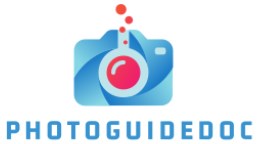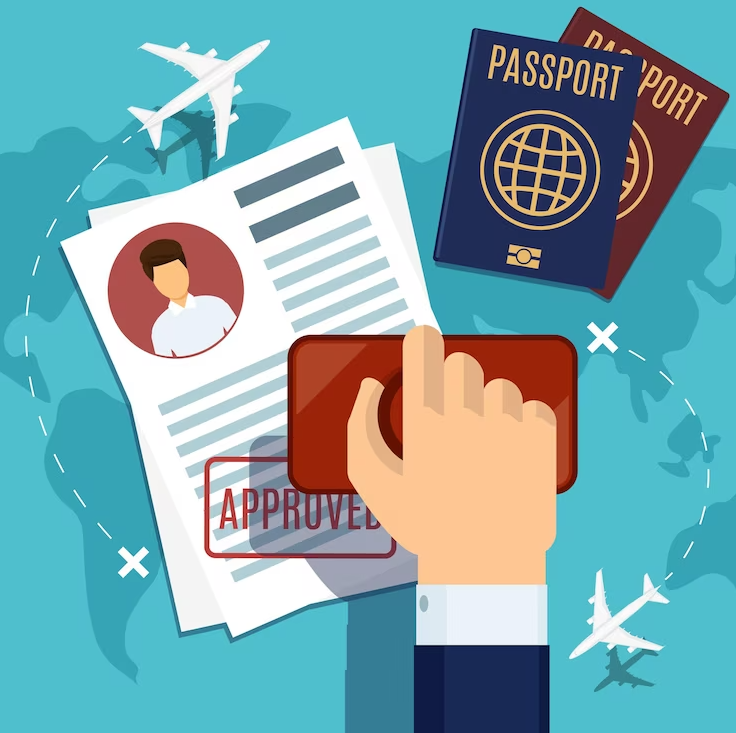The thrill of a new passport often overshadows the meticulous details hidden within its pages. One such detail – the photo – holds immense significance, serving as your official identity for years to come. However, slight deviations from stringent government regulations can lead to frustrating rejections. This article meticulously dissects the essential passport and visa photo requirements, including background specifications, facial expressions, and attire restrictions. By demystifying these regulations, you can avoid the heartbreak of rejection and ensure your passport becomes a treasured symbol of your global adventures.
Understanding Passport Photo Requirements
Passport photos play a pivotal role in the identification and authentication of travelers across the globe. The stringent requirements set by international standards and individual countries are aimed at ensuring the accuracy and security of travel documents.
- Size and Composition: Passport photo dimensions are standardized, typically ranging from 2 x 2 inches (51 x 51 mm) to 35 x 45 mm. Understanding the specific size requirements is crucial to avoid rejection. The composition of the photo is also vital, with guidelines often specifying a close-up shot of the face and shoulders, ensuring that facial features are clearly visible.
- Background: Passport photos commonly require a plain, light-colored background to facilitate easy identification and biometric processing. Understanding the acceptable background colors, often shades of white, light gray, or light blue, is essential to prevent unnecessary delays in the application process.
- Lighting and Shadows: Proper lighting is critical for a clear and accurate passport photo. Guidelines typically recommend even lighting across the face, avoiding harsh shadows or glare. Understanding how lighting conditions can impact the final result ensures that the facial features are accurately represented.
- Facial Expression and Attire: Passport photo requirements often dictate a neutral facial expression with both eyes open and a closed mouth. Additionally, guidelines may specify that the individual should not be wearing accessories like hats or sunglasses. Understanding these requirements ensures that the photo aligns with the standards set by authorities.
- Head Coverings: Some individuals may be permitted to wear head coverings for religious or medical reasons, but specific guidelines exist regarding how these coverings should be worn. Understanding the rules around head coverings is crucial to avoid unnecessary complications in the application process.
By comprehensively understanding these passport photo requirements, individuals can ensure that their submitted photos meet the necessary criteria, reducing the risk of rejection and expediting the passport application process.
Visa Photo Requirements
Visa photo requirements vary among countries and are often more specific than those for passports. Understanding these variations is crucial for individuals applying for visas, as non-compliance can lead to delays or rejection of the visa application. Unlike passports, which adhere to international standards, visa photo requirements are determined by each country individually.
- Visa photos generally require the same level of precision as passport photos, emphasizing the need for clear facial identification. However, countries may have specific preferences regarding dimensions, background colors, and even attire. Some nations may mandate a different size for visa photos or specify background colors that differ from the neutral tones commonly accepted for passport photos.
- Moreover, certain countries may have cultural or religious considerations that impact photo requirements. For instance, dress codes, head coverings, or facial expressions may be subject to specific cultural norms. It is imperative for applicants to research and understand the unique visa photo criteria of the country they intend to visit, ensuring that their submitted photos align with the stipulated guidelines.
In addition to standard guidelines, some countries may have additional specifications for certain visa categories. Business visas, tourist visas, and student visas, for example, might have distinct photo requirements based on the purpose of travel. Failure to meet these specific criteria could lead to complications during the visa application process.
Therefore, individuals seeking visas should not assume that the requirements for visa photos mirror those of passports. Thorough research into the specific guidelines provided by the respective country’s embassy or consulate is essential. This proactive approach significantly enhances the likelihood of a successful visa application, avoiding unnecessary delays and potential rejection.
Common Mistakes That Lead to Rejection
Despite clear guidelines, individuals often make common mistakes when preparing passport and visa photos, leading to application rejections. Recognizing and avoiding these errors is crucial to ensure a smooth application process.
| Common Mistake | Potential Consequence | Suggested Corrective Actions |
| Incorrect Dimensions | Application rejection, delay in processing | Measure photos carefully, adhere to specified dimensions |
| Inappropriate Background | Rejection due to non-compliance with guidelines | Use a plain, neutral background as per requirements |
| Improper Lighting | Distorted facial features, potential rejection | Ensure even and adequate lighting for a clear photo |
| Unacceptable Expressions | Photo rejection due to deviations from guidelines | Follow guidelines for a neutral facial expression |
| Incorrect Attire | Rejection for wearing prohibited accessories or attire | Dress according to guidelines, avoid accessories |
| Digital Alterations | Application rejection, potential legal consequences | Submit unaltered, natural photos, avoid digital edits |
- Incorrect Dimensions: One of the most prevalent mistakes is submitting photos with incorrect dimensions. Each country has specific size requirements, and deviations can lead to rejection. Applicants must carefully measure and adhere to the specified dimensions to avoid such errors.
- Inappropriate Background: Using an unsuitable background color or texture is another common mistake. Failure to comply with the specified neutral and well-lit background can result in photo rejection. Understanding the accepted background criteria is essential for a successful application.
- Improper Lighting: Inadequate lighting can distort facial features and compromise the accuracy of identification. Shadows or glare caused by improper lighting conditions can lead to rejected photos. Ensuring even and sufficient lighting is crucial for a clear and acceptable image.
- Unacceptable Facial Expressions: Passport and visa photos often require a neutral facial expression with both eyes open. Smiling, frowning, or closed eyes are common mistakes that can lead to rejection. Adhering to the prescribed facial expressions is essential for meeting photo requirements.
- Incorrect Attire: Wearing accessories like hats or sunglasses, which are prohibited by many photo guidelines, is a frequent error. Additionally, improper attire or clothing that obstructs the face can lead to rejection. Understanding and adhering to guidelines on attire is crucial for photo acceptance.
- Digital Alterations: Some applicants resort to digital alterations to enhance their photos, which is against regulations. Filters, retouching, or modifications to the original image can result in rejection. Submitting unaltered, natural photos is imperative for a successful application.
Tips for Successful Passport and Visa Photography
Photographing for passport and visa applications requires careful attention to detail to ensure compliance with specific guidelines. Here are detailed tips to enhance the success of passport and visa photography:
- Choosing the Right Background: Select a plain, light-colored background as per the specified requirements. Ensure that the background is free from shadows, patterns, or any distractions. A neutral background contributes to clear facial visibility, aiding in accurate identification.
- Proper Lighting: Opt for natural, diffused lighting to eliminate harsh shadows on the face. Position yourself facing the light source to ensure even illumination. Avoid using flash, as it can create glare and shadows. Well-lit photos enhance facial features and contribute to a clear image.
- Correct Facial Expression: Follow guidelines for a neutral facial expression with both eyes open. Ensure that your face is centered and occupies a significant portion of the photo. Avoid smiling, frowning, or any exaggerated expressions. A straightforward and natural look is preferred for identification purposes.
- Adhering to Dimensions: Measure and crop the photo precisely according to the specified dimensions. Avoid unnecessary cropping or resizing that may lead to non-compliance. This ensures that the photo fits the standard requirements set by passport and visa authorities.
- Choosing Appropriate Attire: Wear clothing that adheres to the guidelines outlined for passport and visa photos. Avoid accessories like hats or sunglasses, unless required for religious or medical reasons. Ensure that your attire does not obstruct your face and complies with the regulations.
- Eye Level Photography: Position the camera at eye level to capture a straight-on portrait. This angle ensures a natural and accurate representation of facial features. Avoid tilting or angling the head, as this may lead to distortion and non-compliance with guidelines.
- Minimal Photo Retouching: Refrain from digital alterations or excessive retouching. Submit unaltered photos without filters, retouching, or modifications. Authorities require clear and natural representations for accurate identification and authentication.
- Testing and Reviewing: Before submitting the final photo, take test shots to ensure all requirements are met. Review the photos for clarity, proper dimensions, and compliance with guidelines. Rectify any issues before the final submission to avoid potential rejection.
- Professional Photography Services: Consider using professional photography services familiar with passport and visa requirements. Professional photographers can guide individuals through the process, ensuring compliance with guidelines and increasing the chances of a successful application.
By following these detailed tips, individuals can significantly improve the quality and compliance of their passport and visa photos, reducing the risk of rejection and expediting the application process.

